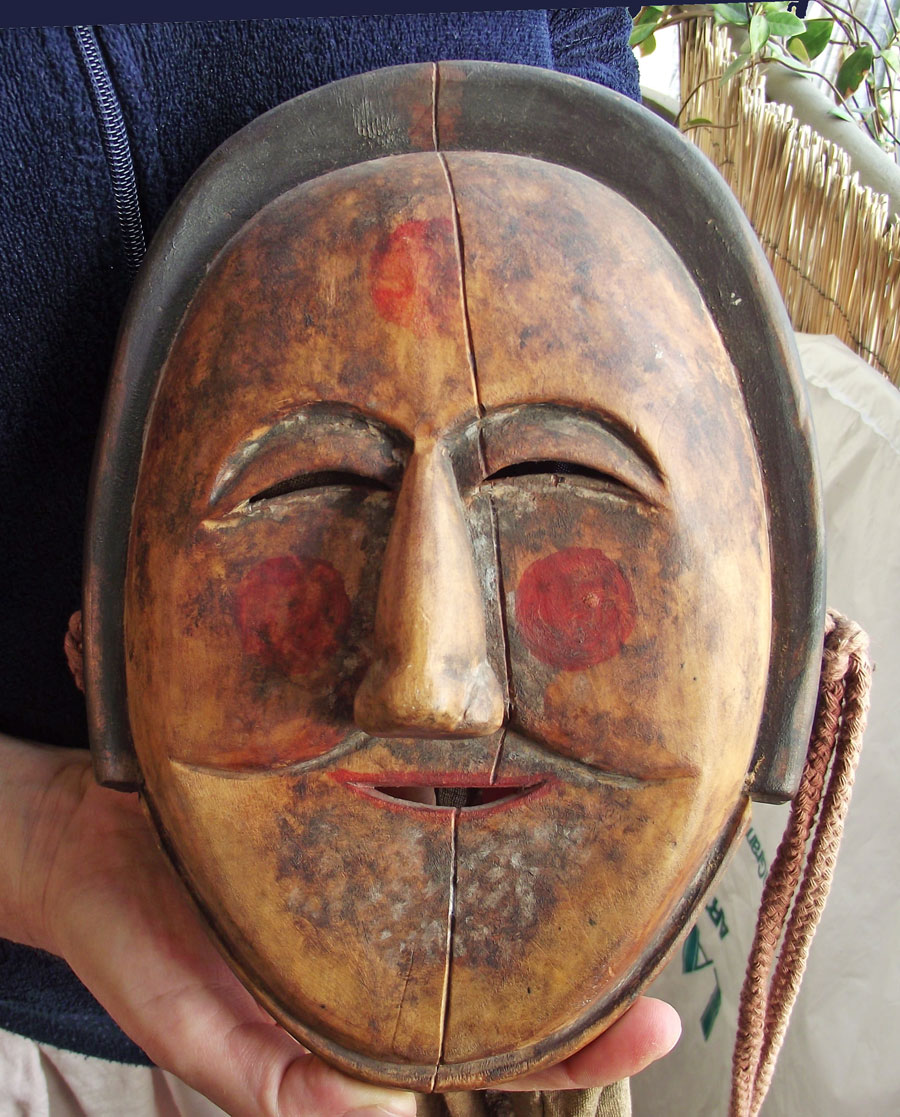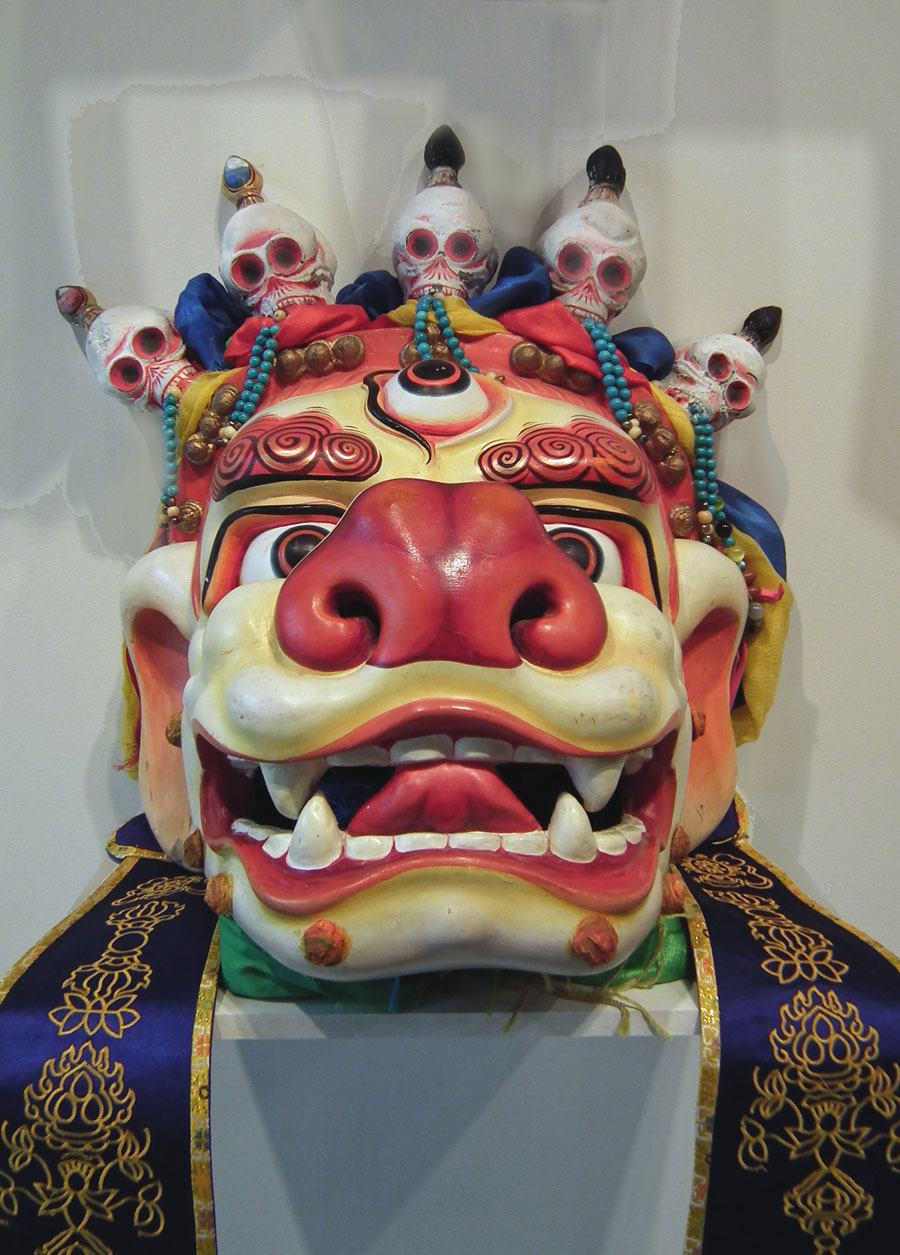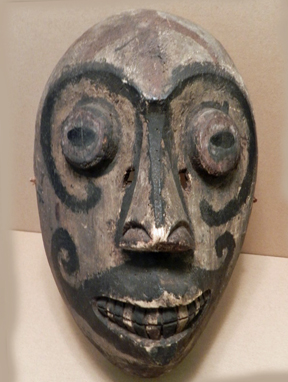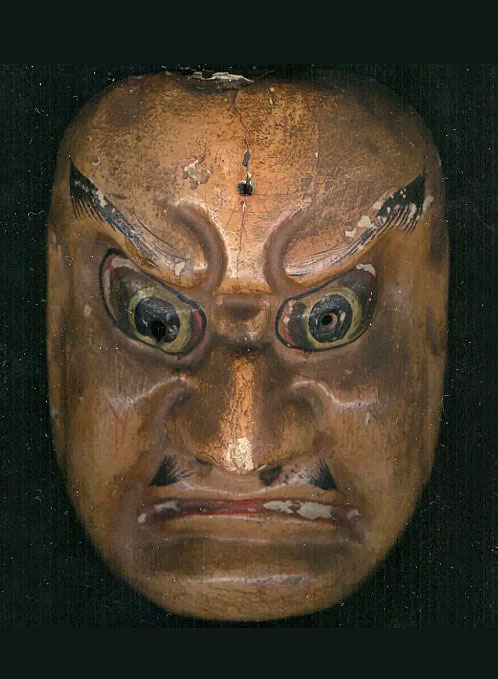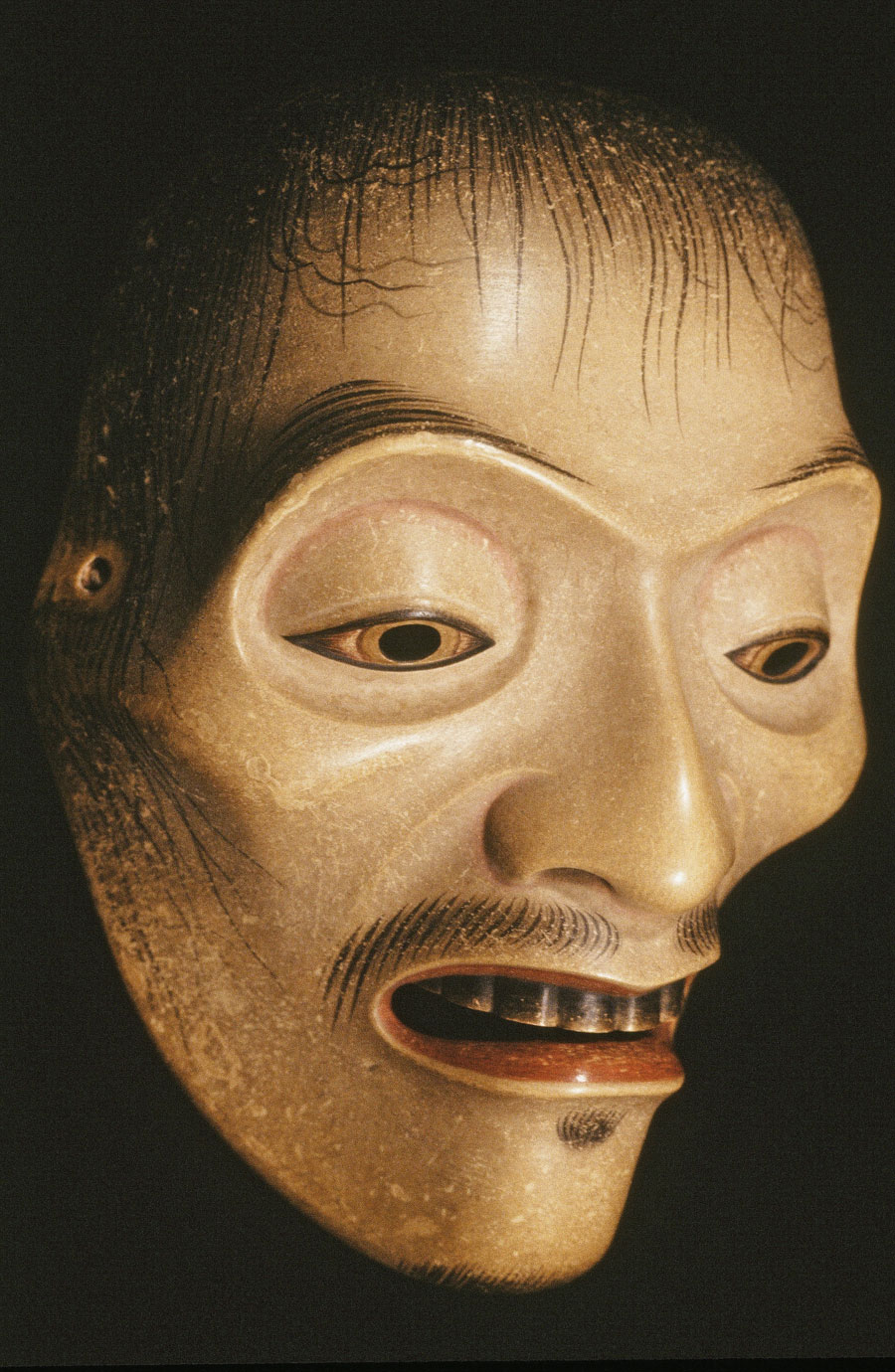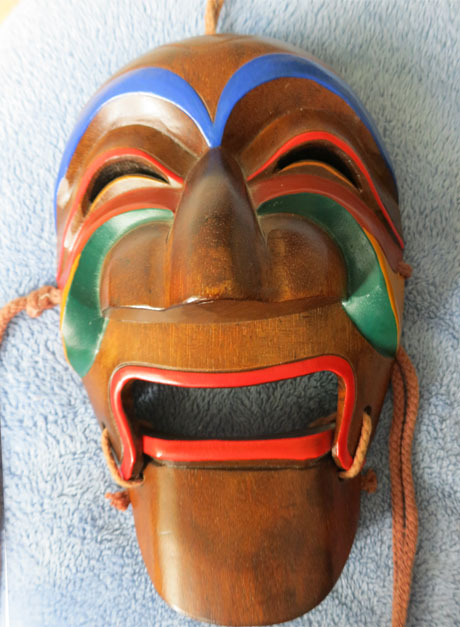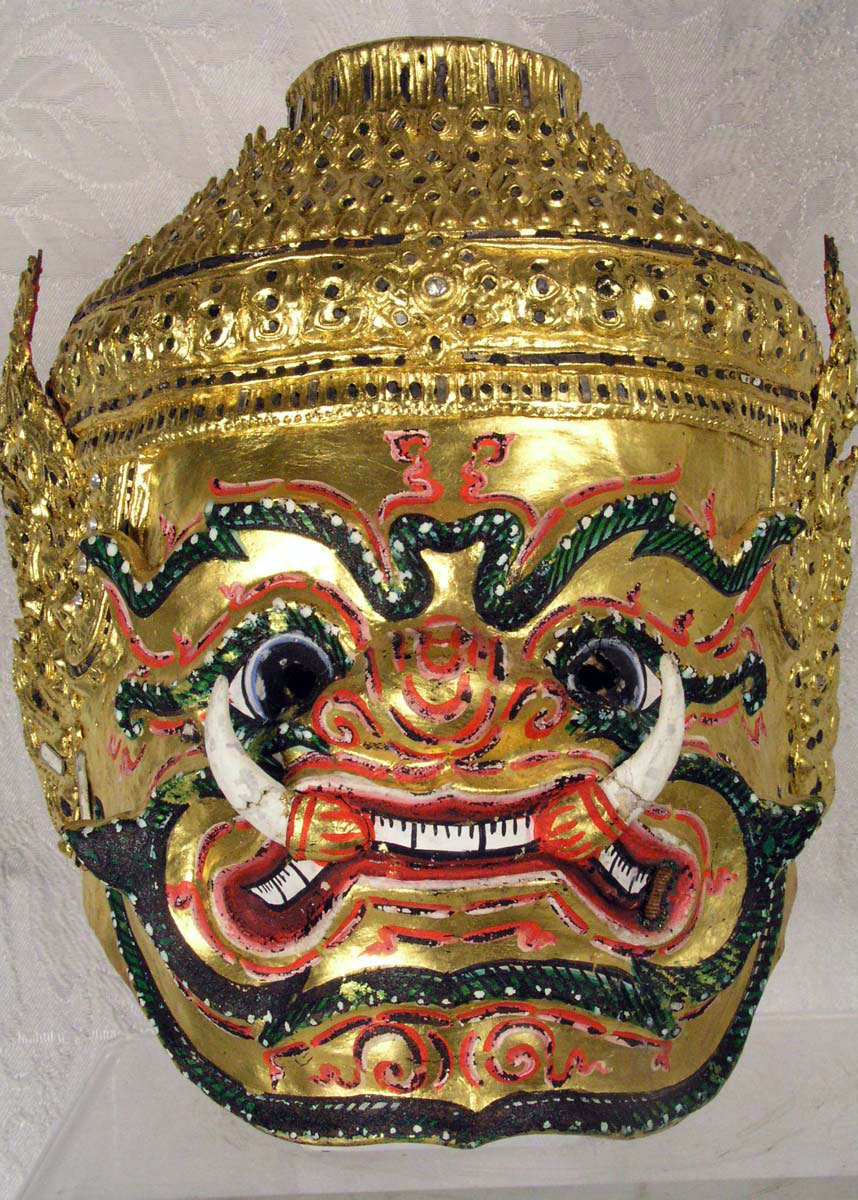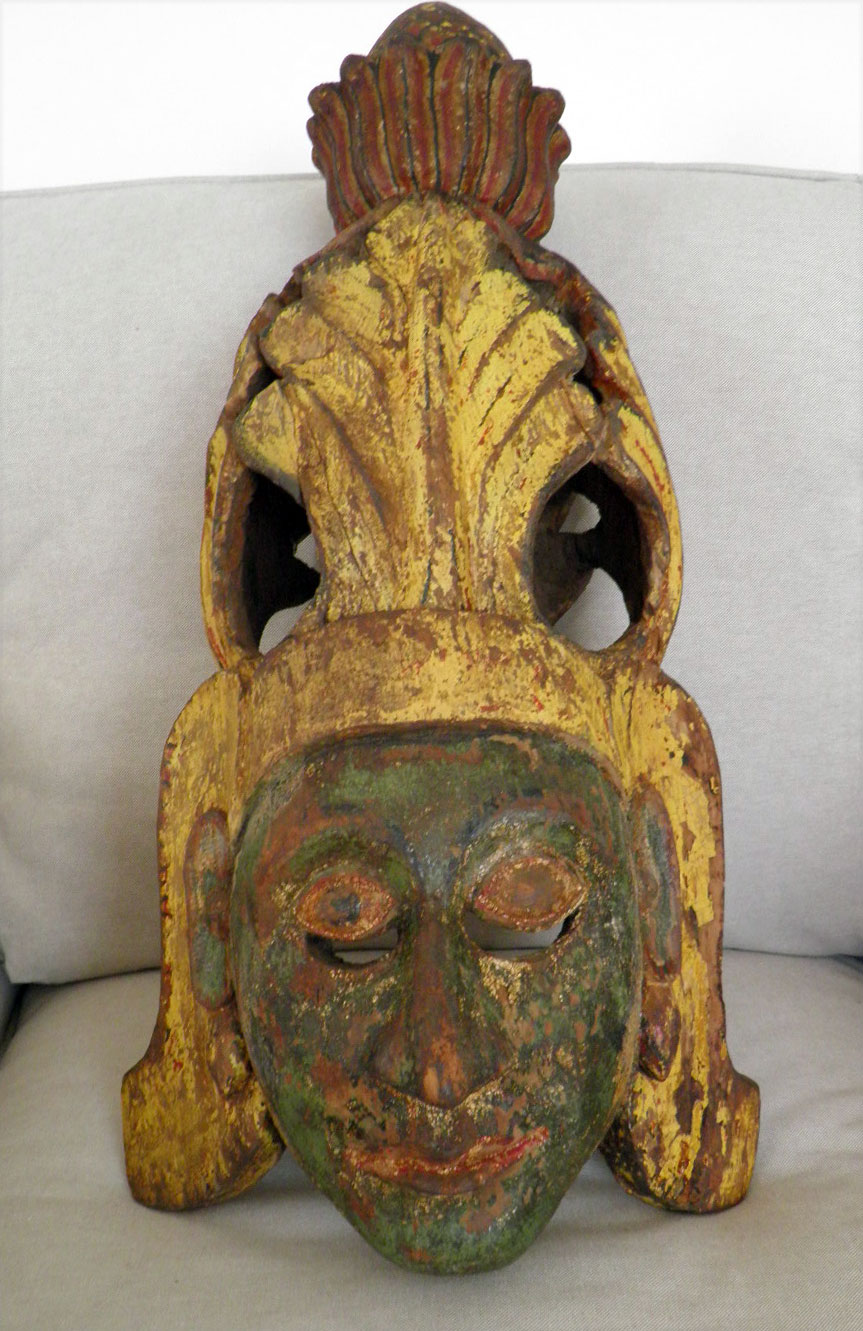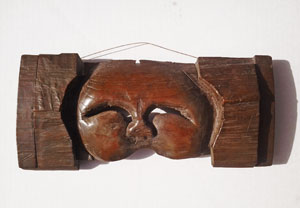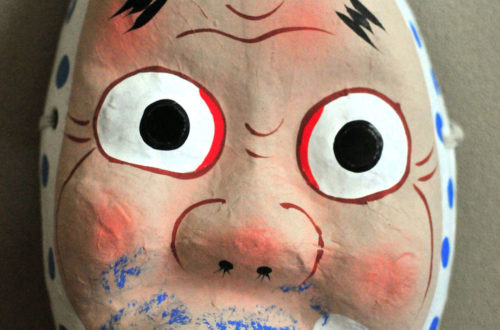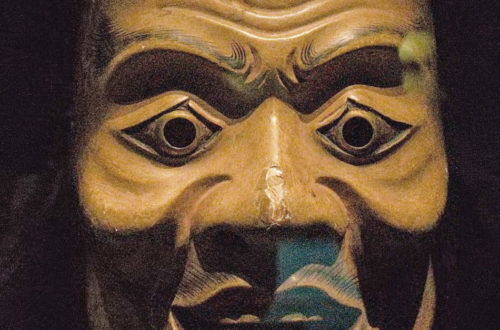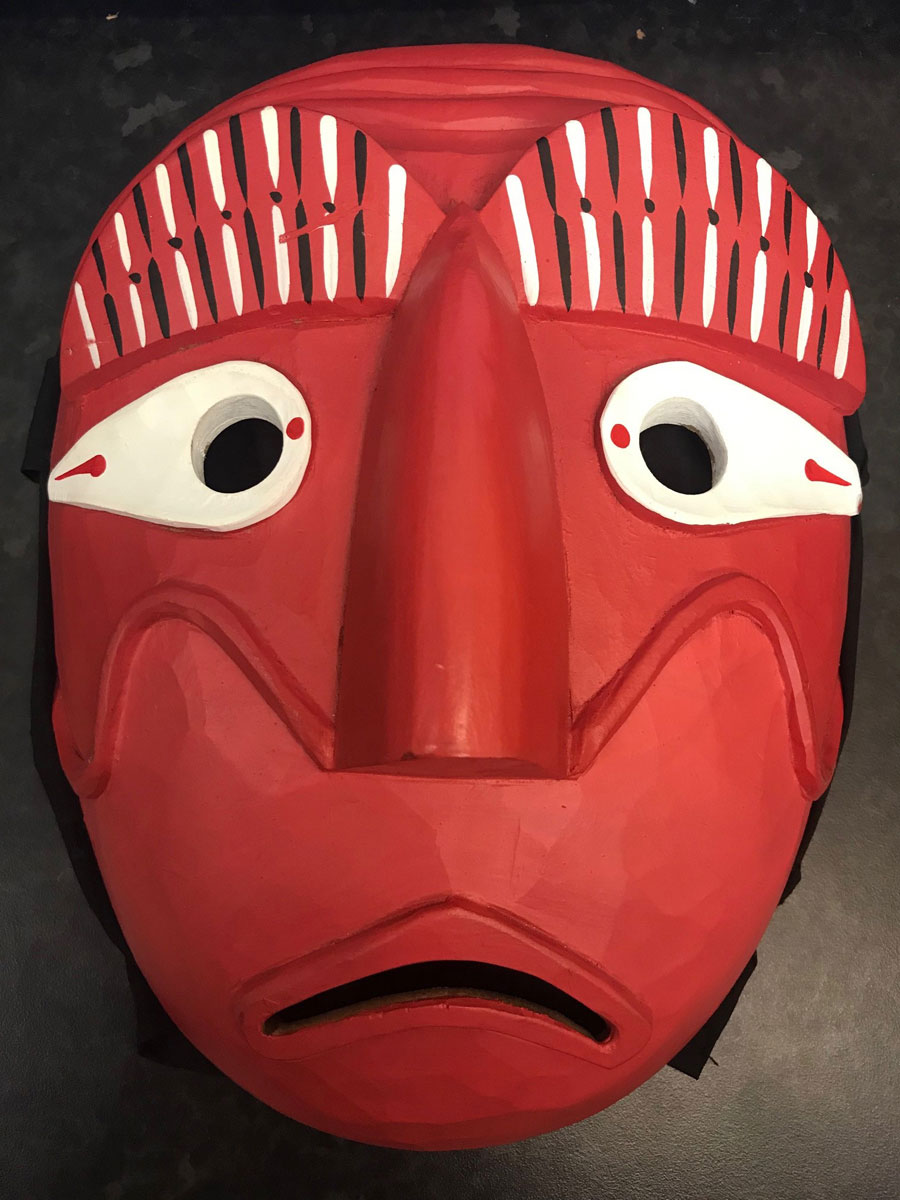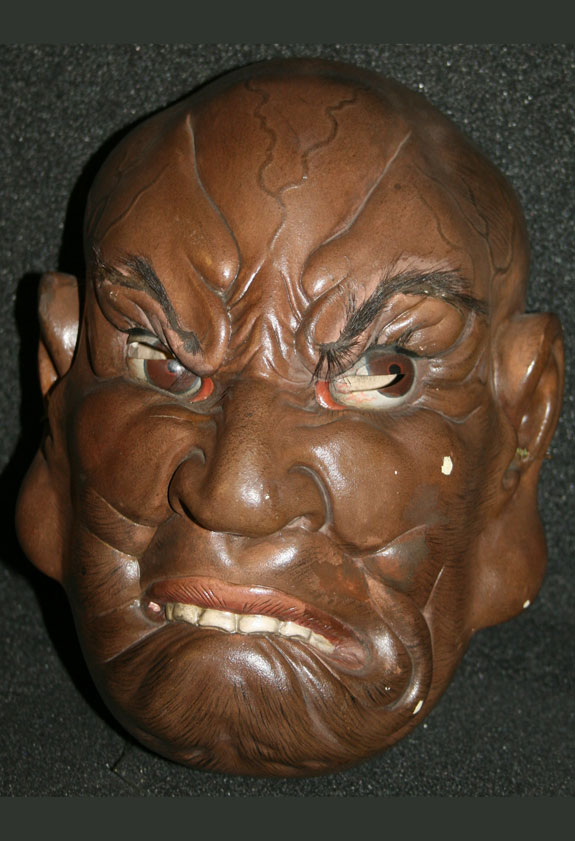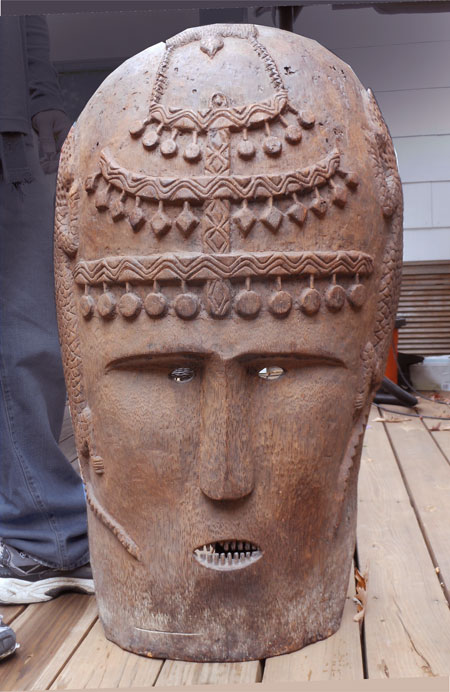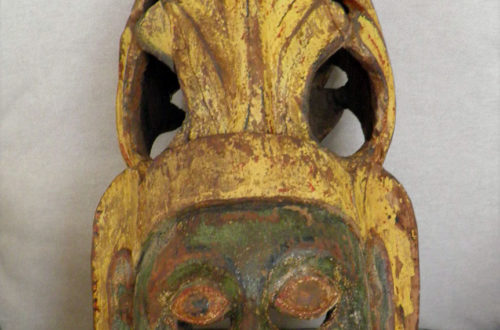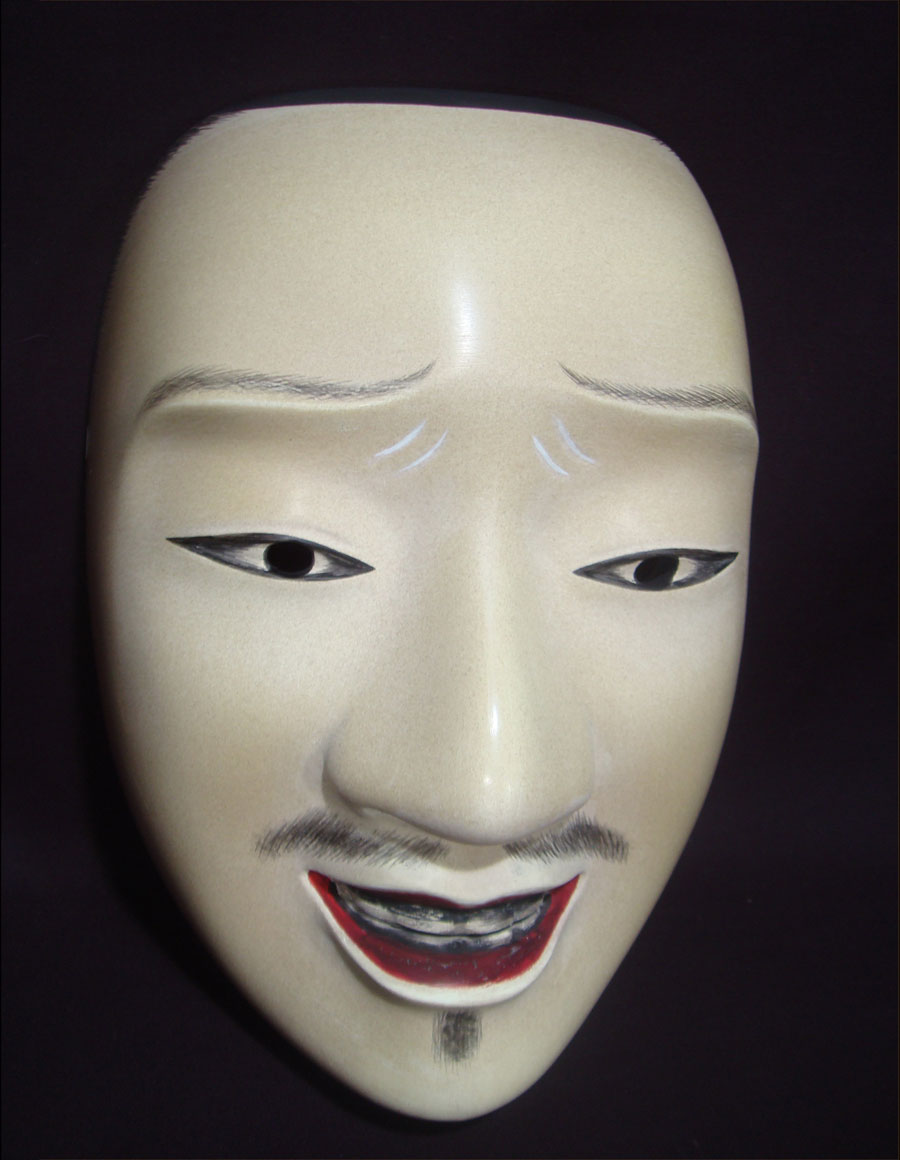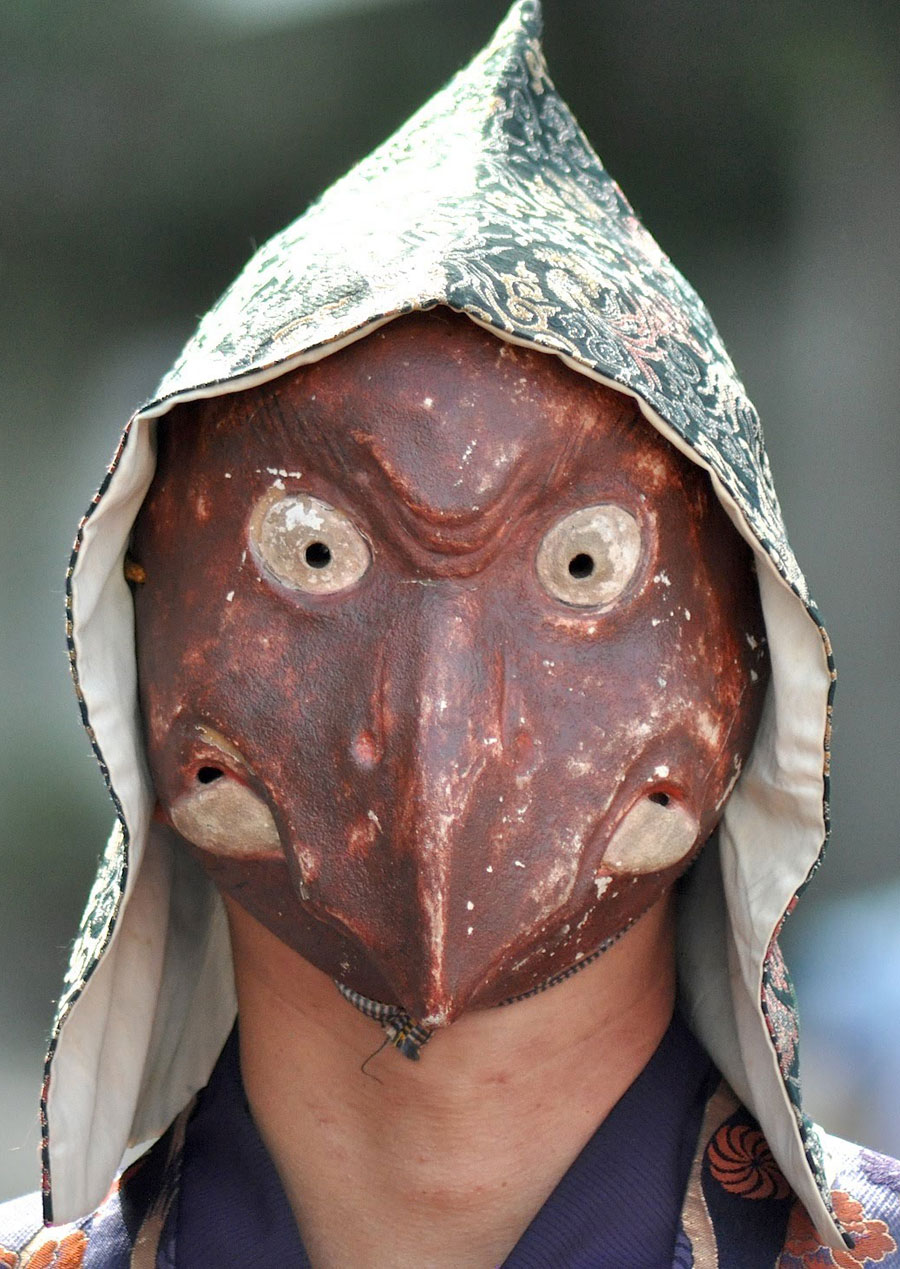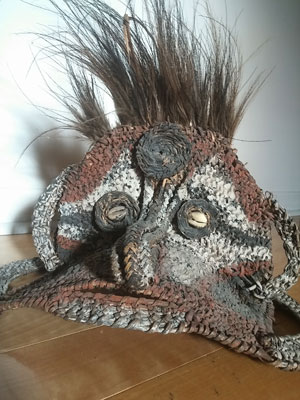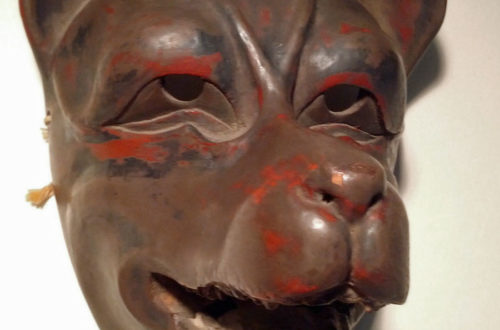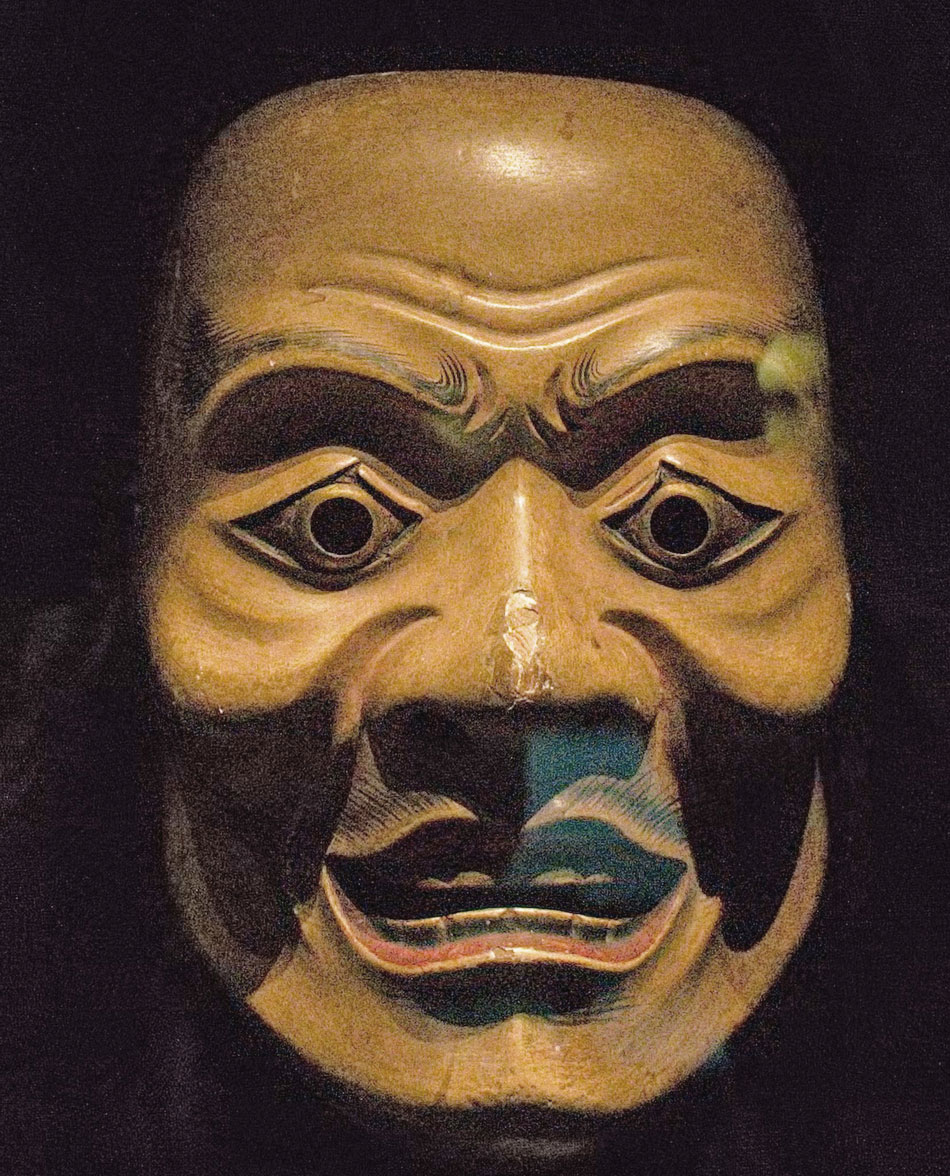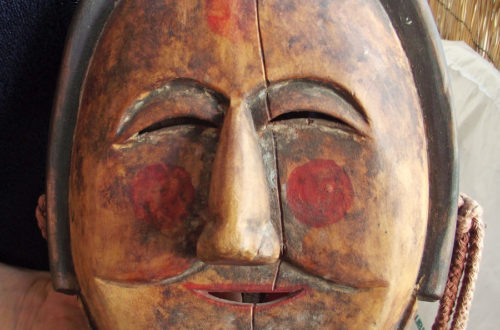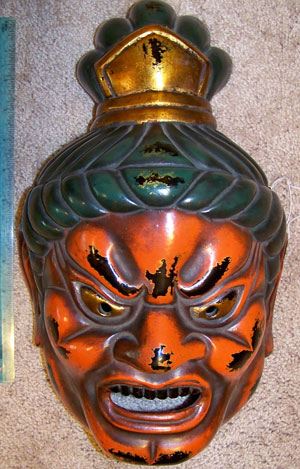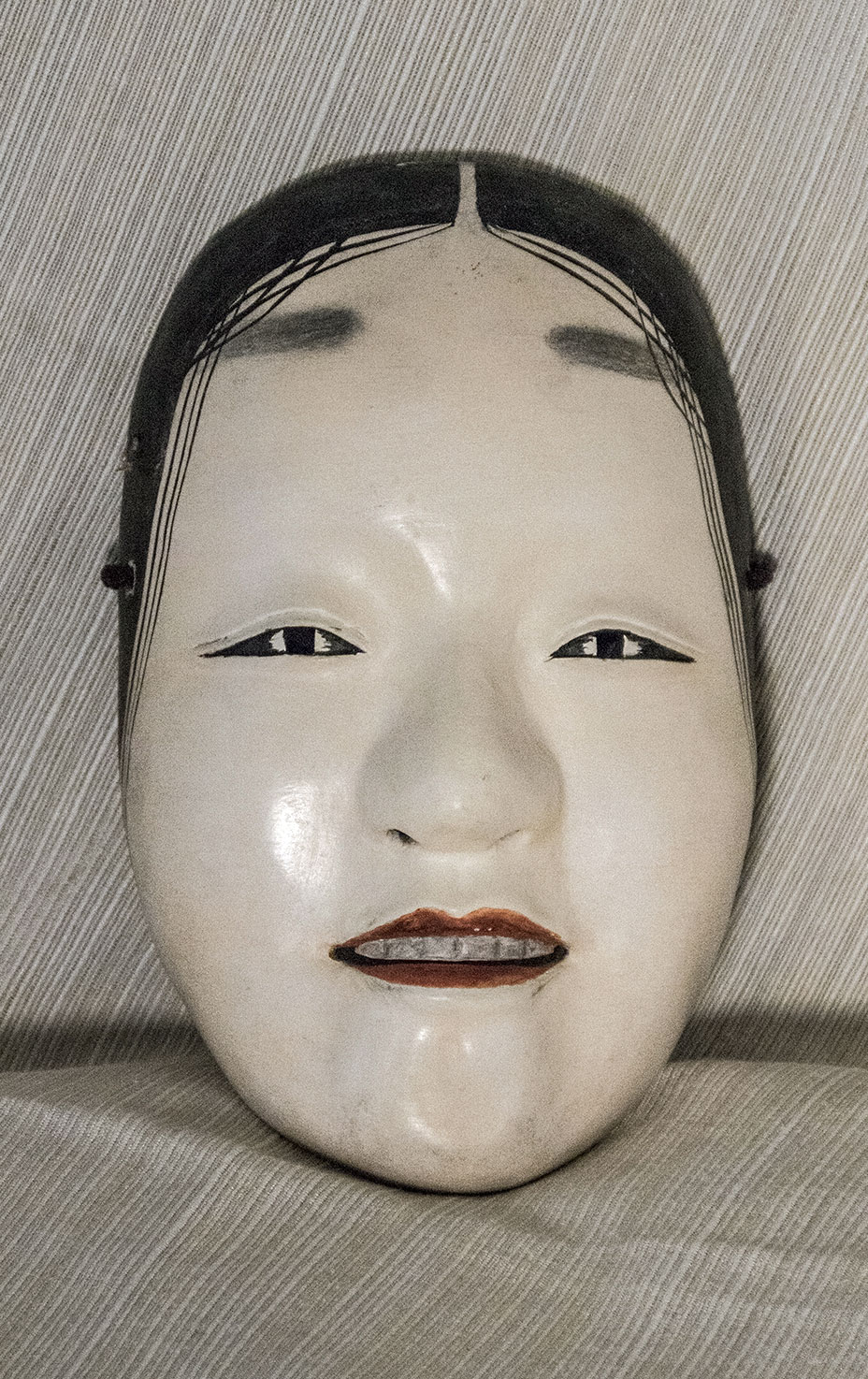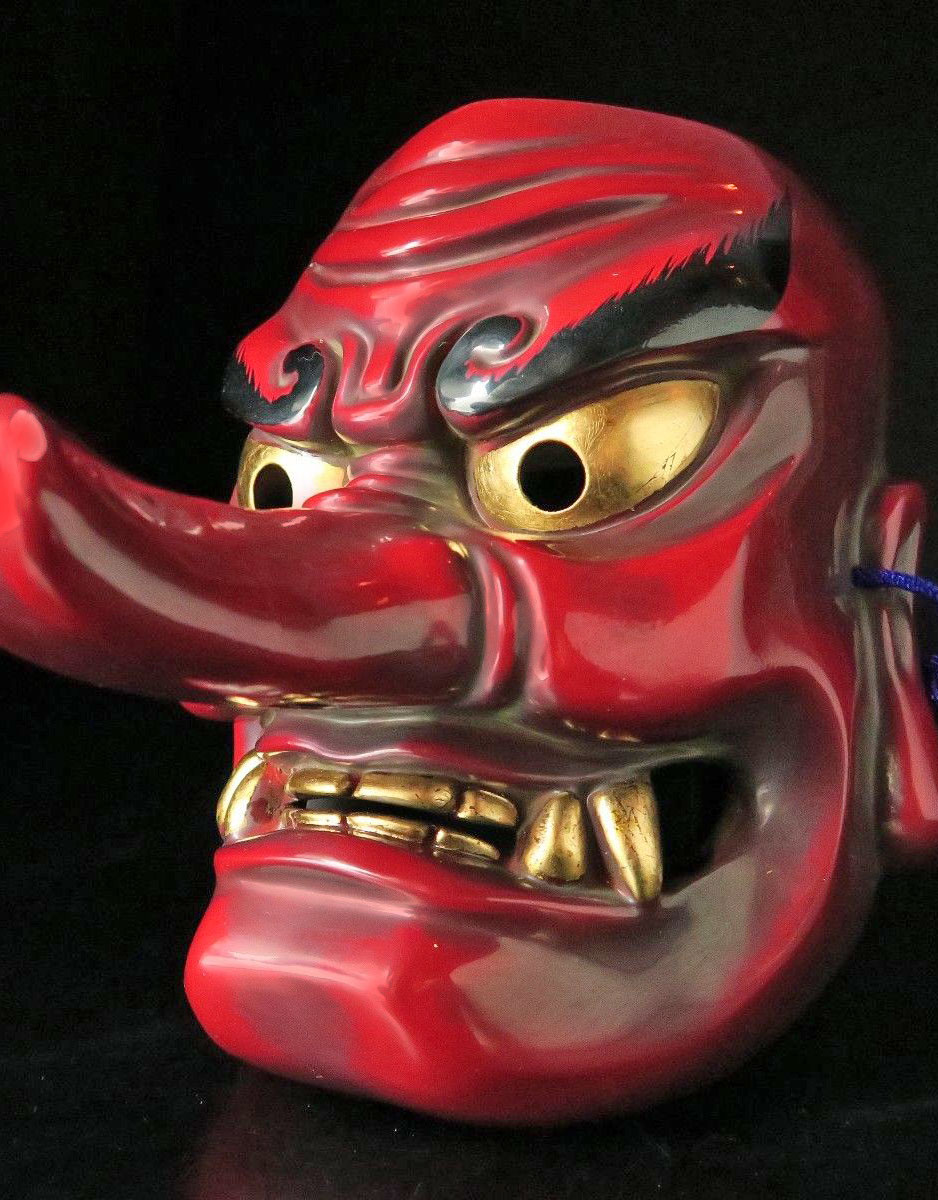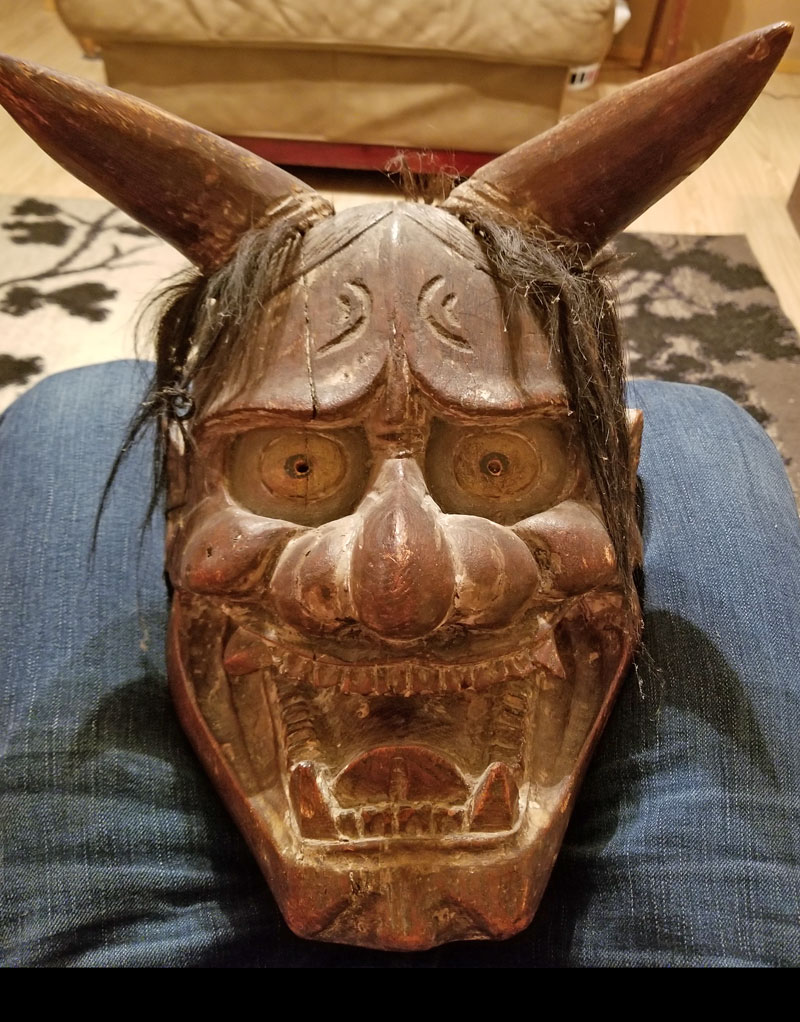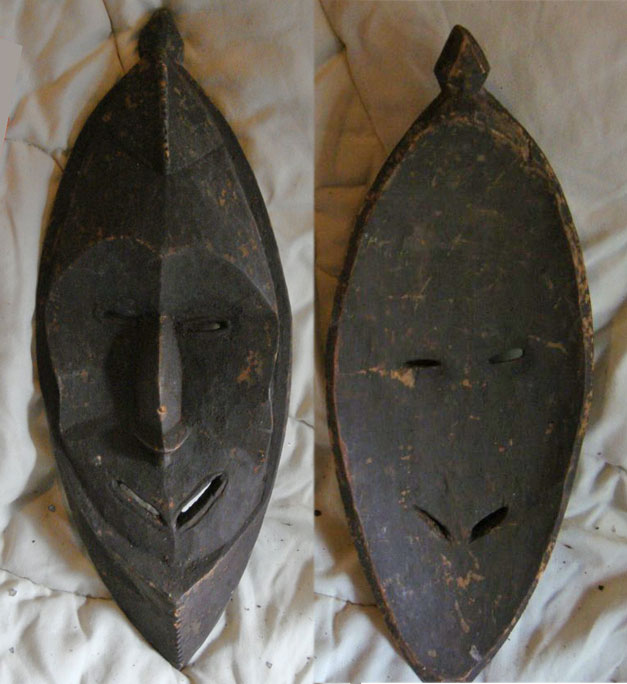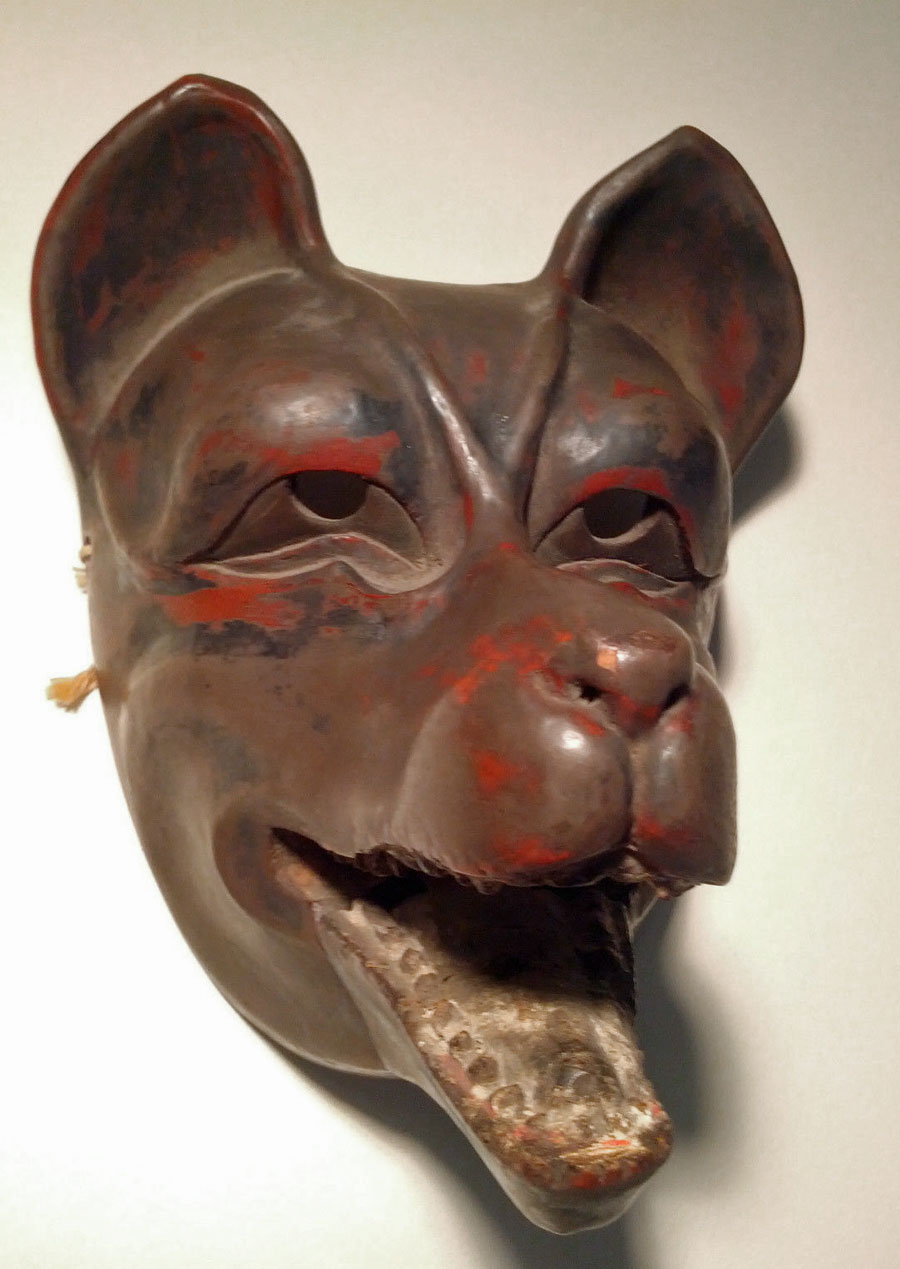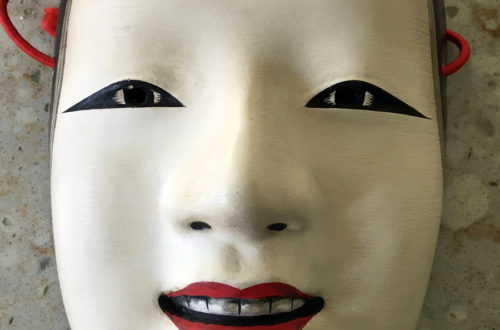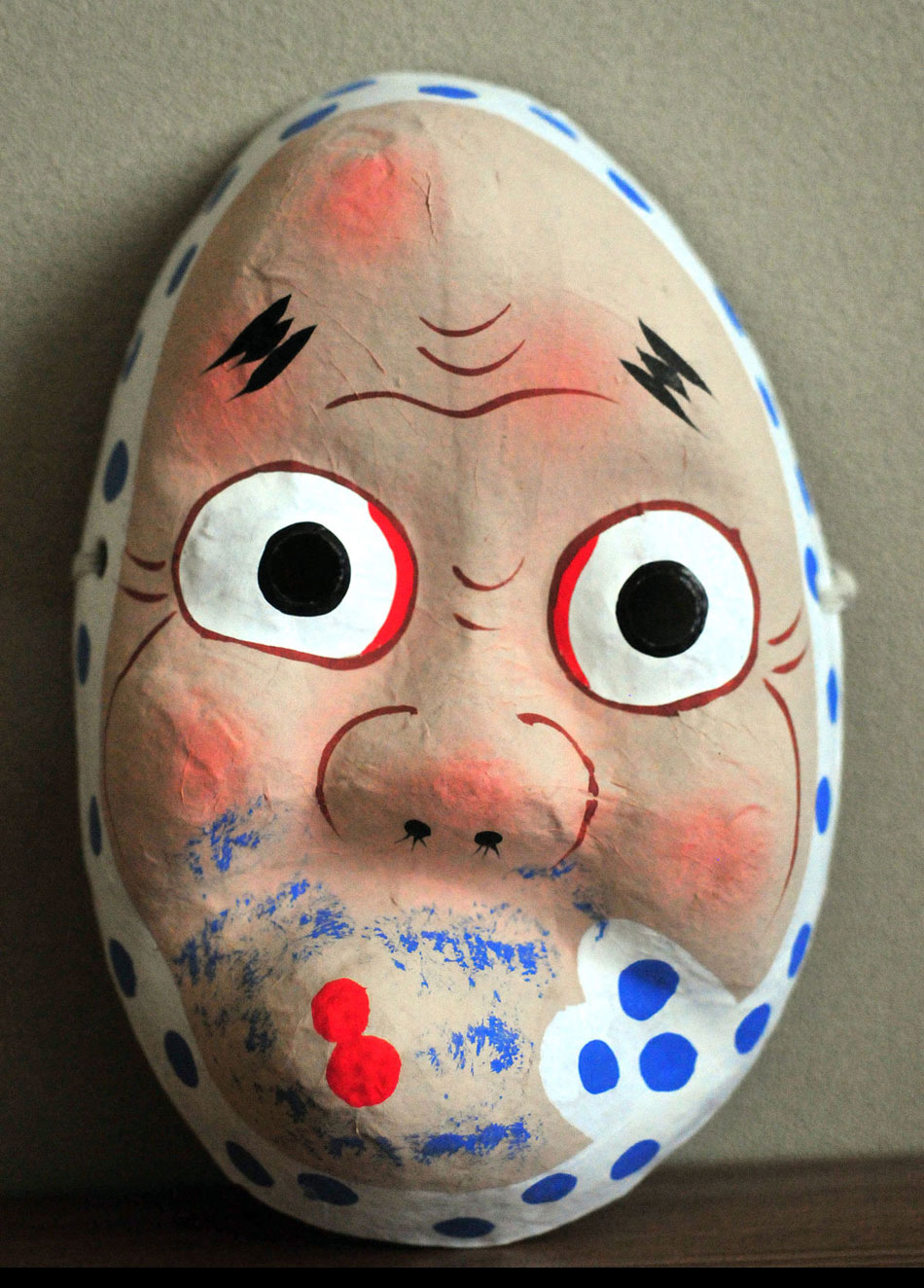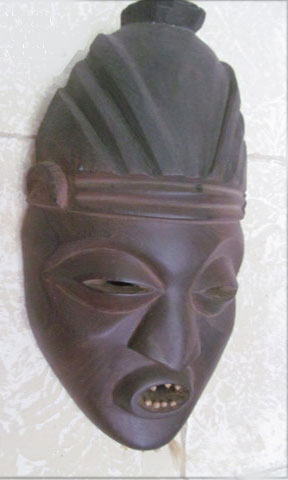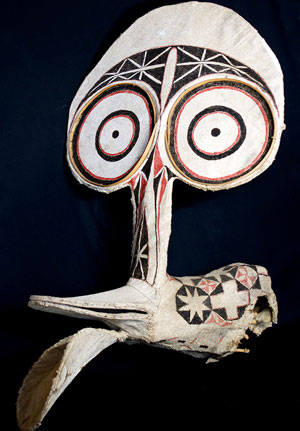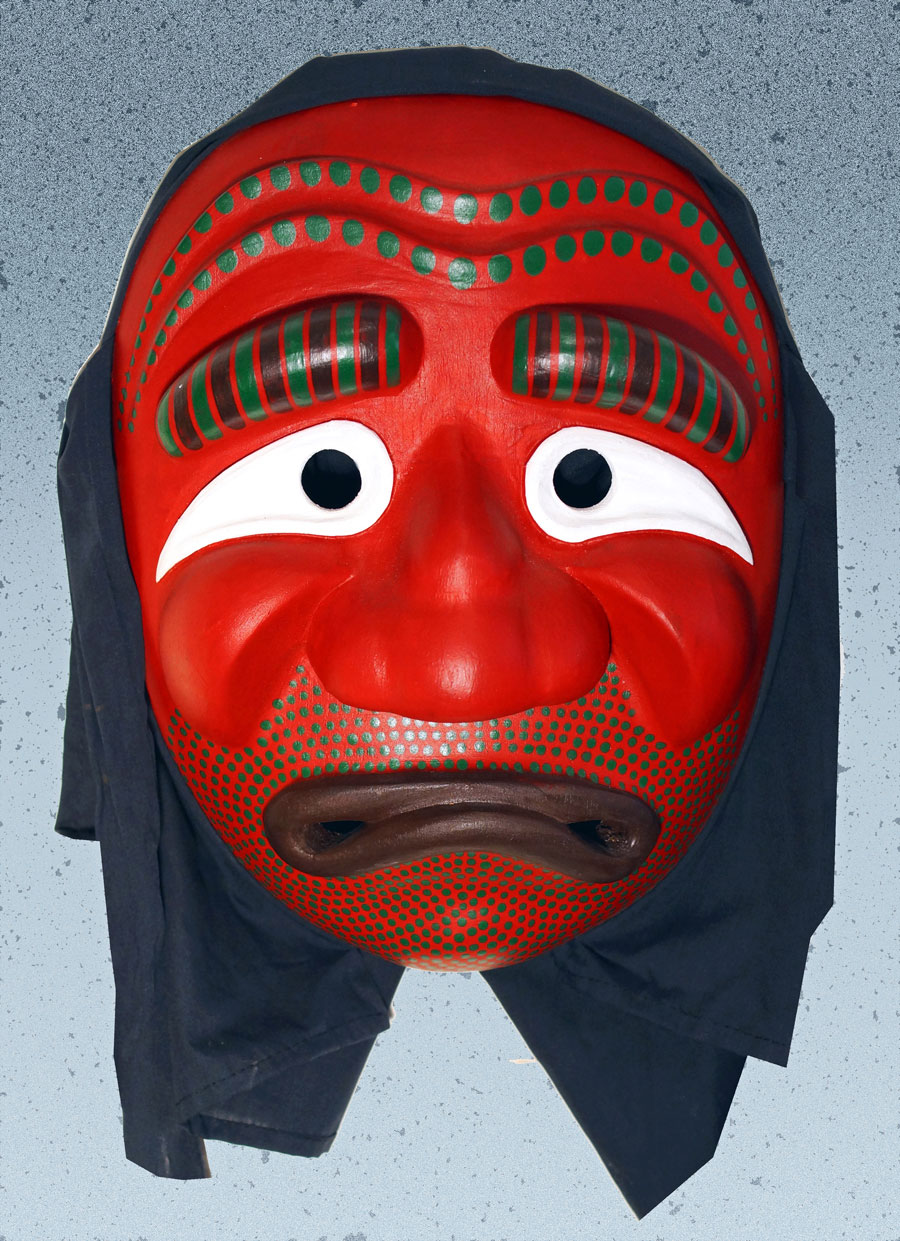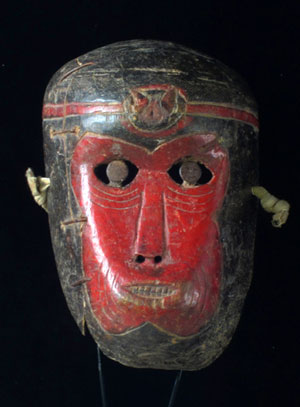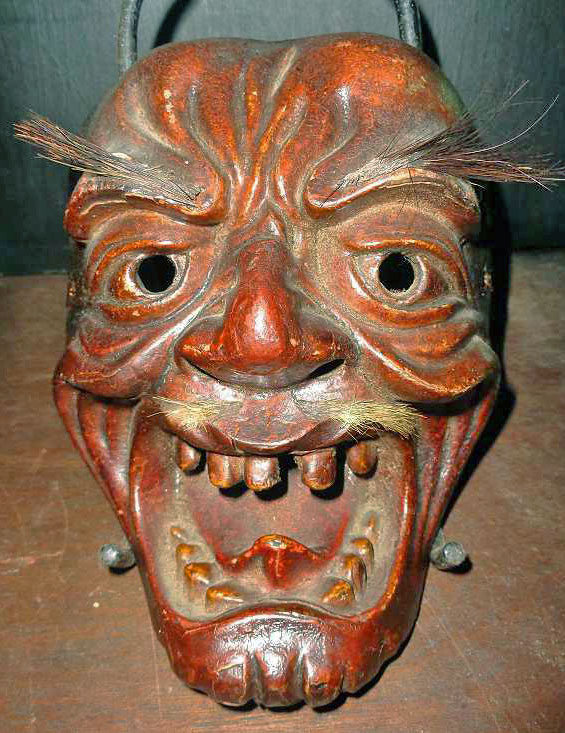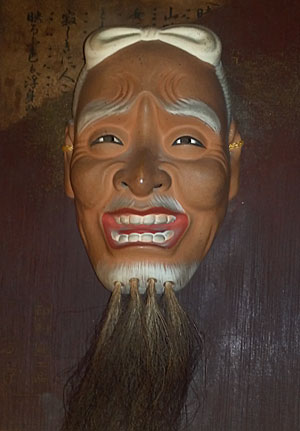Q: I know you don’t choose more than a mask per person, but I have some doubt on this concubine Korean mask. It’s made of light wood and if you look at it from the front it seems to be old. She seems to have also a scar on her face maybe made to strengthen stage lights. But the rear makes me wonder. It looks new and has a red print. Could you please tell me something about it? Monica, 1509 A: Your mask is old and probably used briefly. It has been broken in half which will lower its value only a bit. Try to get a translation of…
-
-
Japanese Noh mask
There are over 200 characters portrayed in the many Noh plays of Japan. This one could possibly be Ayakashi the supernatural man or Heida the warrior… maybe someone else. Regardless, it’s a very nice mask. All of the eyes in Noh masks stare blankly into space. The ambivalent corners of their mouths leave their moods utterly indiscernible. These wooden masks, used in an ancient form of Japanese theater, were made to be expressionless. But performers are charged with using slight and subtle movements to reveal the hidden emotions carved into each one. Dating back almost 1,000 years, Noh is a style of musical drama with plots ranging from Japanese legends…
-
Old mask from India or Thailand?
Q: This mask has just been restored. It had suffered serious damage in storage. I would be interested to know its origin and its age. The conservator believes it is probably 17/18th century from Thailand, repainted red in the 19th century to bring it “up to date” with the craze for Indian artifacts at that time. John, 1478 A: The restoration expert did a good job and could be right about age and location. Please tell me who she/he is. Occasionally I’m asked for a recommendation. The mask is Hindu, but I can’t name the character or god. Also, it may be from India or Nepal… and the age is…
-
Korean traditional character mask
Q: The mask is roughly 28 by 20 cm. It is wooden and has a black cloth covering and ties at the back. I think it is of Korean origin, but unsure if it’s an artistic/religious mask or if it depicts a particular character. Maddie, 1477 A: Sorry to take so long. I’ve had some problems that took a week to fix. Your red mask is one of the characters in the Yangju Pyeolsandae Nori, the most popular folk dance in all of Korea. There are over 20 other actors in the dance. Many Korean masks are designated as national cultural properties. Yours is no exception and would have been…
-
Noh mask from Japan
A book called Japanese Noh Masks shows almost 300 different characters from the Noh plays. This one is called Imawaka. The workmanship is fabulous. It is new and could be used by an actor, collector or decorator. Here is a short piece written by Stella Ko, of CNN… Their almond-shaped eyes stare blankly into space. The ambivalent corners of their mouths leave their moods utterly indiscernible.These wooden masks, used in an ancient form of Japanese theater called Noh, were made to be expressionless. But performers are charged with using slight and subtle movements to reveal the hidden emotions carved into each one. Dating back almost 1,000 years, Noh is…
-
Japan uses the most masks
The picture shows a finely made, possibly very old, Japanese character mask. It could be Waka Otoko or Hatachi Amari from the Noh theater, or even a older Bugaku masks. I just don’t know. There so many masks, some of which go way back in history. There are more old masks in Japanese collections than anywhere. But there’s more. The Japanese use masks a lot. Usage includes Noh theater, village plays, temple performances, parades, celebrations, export, souvenirs for tourists, gifts, home decoration and sword fighting. No wonder collecting Japanese masks is so popular. On pages 54-56 of Masks of the World by Ibold and Yohn there are 24 shown and…
-
Japanese mask with long nose
This is the famous Tengu. They’re known to inhabit the mountainous regions of Japan and fly from treetop to treetop carried by expansive feathered wings. Tengu are not necessarily evil creatures, but they probably shouldn’t be crossed. If you show the proper respect, they’ve been known to share their marital knowledge of the sword with us mortals, but beware their wrath at the same time. This powerful mask of Tengu is an extraordinary example of this character with its dramatic and spectacular face and nose. It represents the mischievous Forest God seen in Kyogen plays performed between Noh Dramas. It is both terrifying and intriguing, but it is a favorite…
-
Japanese fox mask with moving jaw
Q: I would appreciate you posting this old Japanese mask of mine. Your viewers can see more on the eBay site by searching for “maskmonger.” Nate, 1444 A: Kitsune is the Japanese name for this fox mask. There’s patina attesting to multiple times that this mask was culturally danced. Note the articulating jaw that would move during the performance. Signed by “MOTONAGA” or “GENCHOU”. This mask was made and used at sacred Shinto performances during the Kagura shrine festivals. Given Japans rapidly shrinking population, which is making small towns and their shrines close, it seems all the more likely that this is an actual Shrine mask. The dancer wearing this…
-
Why such a distorted Japanese mask?
The use of masks in Japan started from 10,000 BCE. They are used in plays and rituals, and for Noh theater. Today there are a wide range of characters, ranging from very realistic to extreme exaggerations. This one is called Hyottoko. He can be used for comic interludes in Noh plays. The inexpensive papier mache version shown here can also be used by street performers and the general public. In the USA it can show up for Halloween. Hyottoko, is probably the strangest-looking character of Japanese masquerade. Of course, he is very funny looking and very strange. But I think he would be disturbing enough to strike fear in somebody…
-
Red Korean old monk mask
This old monk mask is worn by a character in the Pyolsandae dance performed in Yangju, South Korea. It is10 inches tall, painted wood with black cotton hood, and in new condition. Extras are always made for tourists and collectors, and they are quite affordable. In the dance drama this character becomes infatuated with the pretty girl and tries to seduce her. He is an ugly old guy. The yangju pyeolsandae nori is a very popular folk dance in korean history. There are over 20 characters. Red, black, white and other bright colors help to identify the character, many of which appear to have deformed features. Most of them are…
